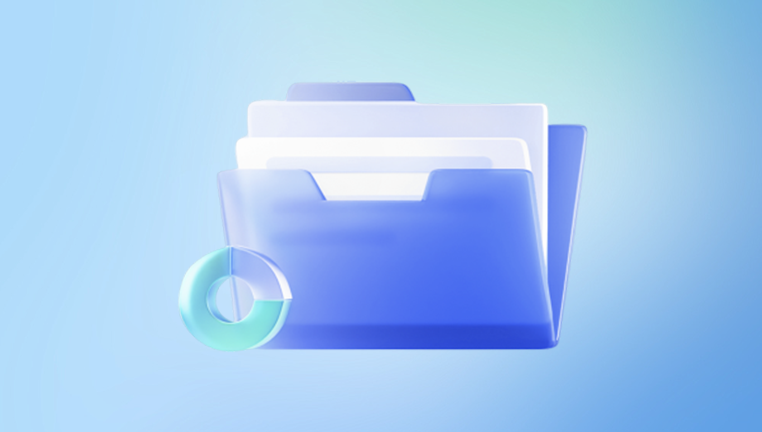How to restore replaced files
What makes this situation particularly tricky is that “replaced” isn’t the same as “deleted.” When a file is deleted, your operating system simply removes the reference to it, and recovery software can often bring it back if you act quickly. But when a file is replaced, the original data may be partially or fully overwritten, making recovery more complicated.
When you replace a file, your system writes new data over the original file’s location. Depending on the file system and storage medium, the old file’s data may still be partially present until it’s completely overwritten by new data.
Key points:
Overwriting is more destructive than deletion — but recovery is still possible in some cases.
The faster you act, the higher the chance of success.
The original file may still exist in backups, caches, or shadow copies.
Common Scenarios Where Files Get Replaced
Saving a New Version with the Same Name
Editing a document and saving over an old file unintentionally.

Copying Files into a Folder
Choosing “Replace the file in the destination” instead of “Keep both files.”
Software Auto-Save
Some programs overwrite existing files without confirmation.
File Syncing Conflicts
Cloud services (Google Drive, OneDrive, Dropbox) replacing older files with newer ones.
Unintentional Export Overwrite
Exporting an image, video, or project into a folder where a file of the same name already exists.
First Things to Do After a File is Replaced
Speed is crucial. Every action that writes to the disk reduces your chances of recovery.
Stop Writing to the Drive
If the replaced file is on your system drive, avoid installing software or saving new files.
Check the Recycle Bin
Sometimes, when replacing files, the system moves the old version to the Recycle Bin or Trash.
Check Cloud Backup History
Cloud storage often keeps previous file versions even after replacement.
Identify Where the File Was Stored
Recovery options may differ depending on whether the file was on a local drive, external drive, or network location.
Method 1: Restore Previous Versions in Windows
Windows has a built-in feature called Previous Versions, which works if System Protection or File History was enabled.
Steps:
Right-click the folder where the replaced file was located.
Select Properties.
Go to the Previous Versions tab.
Look for earlier folder versions.
Open the version to browse, or select it and click Restore.
Method 2: Restore from File History (Windows)
If File History was turned on, you can restore individual files.
Open the folder containing the replaced file.
Click the History button in the toolbar.
Browse through available versions.
Select the one you want and click Restore.
Method 3: Use Time Machine (Mac)
On macOS, Time Machine automatically creates snapshots if enabled.
Open the folder where the file was stored.
Click the Time Machine icon in the menu bar and choose Enter Time Machine.
Scroll through backups to find the previous version.
Select it and click Restore.
Method 4: Check Cloud Storage Version History
Cloud services often maintain file histories.
Google Drive: Right-click file > Version history.
Dropbox: Right-click file > Version history (up to 30 days for free users).
OneDrive: Select file > Version history from the top menu.
You can download the older version and replace the overwritten one.
Method 5: Check Auto-Save or Temporary Files
Many apps create auto-save or backup files in case of crashes.
Microsoft Office: Check the AutoRecover folder.
Adobe Apps: Look for autosave locations in preferences.
Video/Audio Editors: Search for “temp” or “backup” folders within the project directory.
Method 6: Use Data Recovery Software
If no backups exist, try recovery software. The success depends on whether the replaced data is fully overwritten.
Popular tools:
Drecov Data Recovery
Drecov Data Recovery is designed to help users recover files that have been accidentally replaced or overwritten. While recovering a replaced file can be more challenging than restoring a deleted one, Drecov Data Recovery uses advanced scanning and reconstruction techniques to search for remnants of the original data that may still exist on the storage device.
When a file is replaced, the operating system often writes the new file’s data over the same disk sectors previously occupied by the old file. In some cases, this process only partially overwrites the original content, leaving fragments that can still be recovered. Drecov Data Recovery scans at a deep, sector-by-sector level to locate these fragments and reassemble them into usable files.
Using Drecov Data Recovery is straightforward:
Open the software and select the drive where the file was replaced.
Choose Deep Scan to perform an extensive search for recoverable data.
Filter the results by file type or name to locate possible versions of the replaced file.
Preview files before recovery to verify their integrity.
Save recovered files to a different drive to avoid further overwriting.
Steps:
Install the recovery software on a different drive than the one containing the replaced file.
Select the drive to scan.
Search for older file versions or remnants.
Recover to a safe location.
Method 7: Restore from Backup
If you have external backups:
Plug in the backup drive.
Use your backup software to restore the specific file.
Save it to a new location to avoid overwriting anything else.
Method 8: Check Email Attachments or Shared Copies
Sometimes the replaced file was previously emailed or shared:
Search your email for the file name.
Check shared folders on platforms like Teams, Slack, or project management tools.
Method 9: Explore Shadow Copies (Windows Advanced)
Shadow copies are hidden snapshots of files and folders created by Windows.
Press Win + R, type:
ruby
CopyEdit
\\localhost\C$\Previous Versions
Browse through available shadow copies.
Copy the needed file from there.
Method 10: Seek Professional Recovery Services
If the replaced file is extremely important (e.g., legal documents, business data), professional recovery services can sometimes restore overwritten data by reading residual traces on the disk. These services are costly but may succeed when software cannot.
Preventing Future File Replacements
Enable Version History
Turn on File History (Windows) or Time Machine (Mac).
Use Cloud Sync with Versioning
Services like Dropbox keep past versions for easy recovery.
Rename New Versions
Add version numbers or dates to filenames (e.g., Report_v1. Report_v2).
Keep Multiple Backups
Follow the 3-2-1 backup rule: 3 copies, 2 different media, 1 offsite.
Use “Save As” Instead of “Save”
Especially when making major edits.
Turn On AutoSave in Office Apps
Paired with OneDrive, this ensures version history.
Special Case: Replaced Folders
When replacing entire folders:
Check the Previous Versions feature for the whole directory.
Some files may still be in the Recycle Bin.
Cloud storage may allow restoration of the whole folder to an earlier state.
When Recovery Is Not Possible
If the original file has been completely overwritten multiple times, recovery may be impossible — but backups, email copies, or cloud archives often save the day. The key is having preventative measures in place before accidents happen.
Restoring replaced files can be challenging, but it’s far from hopeless. The most effective approach combines quick action, use of built-in recovery features, exploration of cloud version histories, and, if needed, specialized recovery software or professional help.
The lesson for the future is clear: enable backups, save versions intentionally, and store copies in multiple locations. With these measures, you can greatly reduce the stress and potential loss caused by accidental file replacement.

